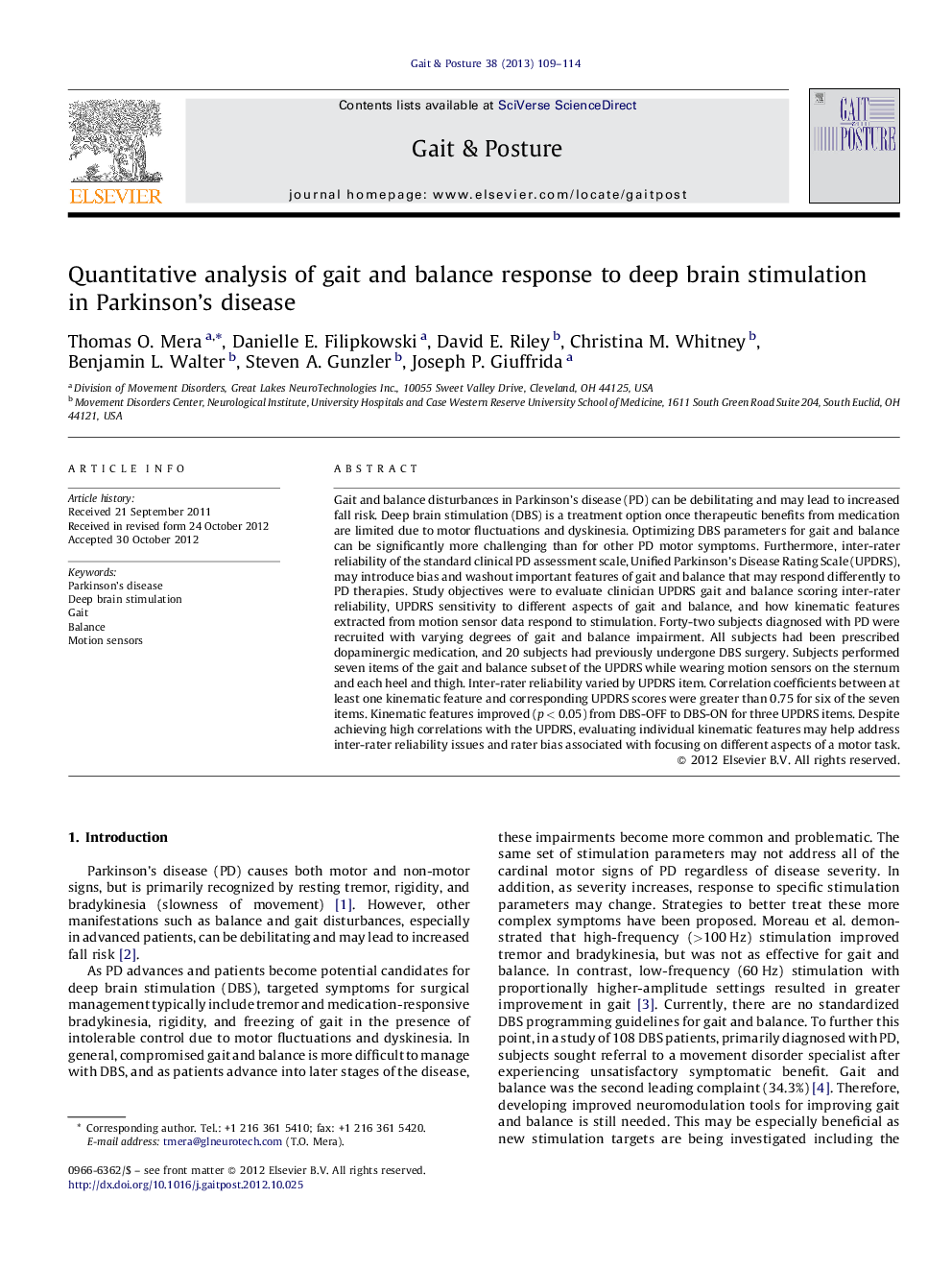| کد مقاله | کد نشریه | سال انتشار | مقاله انگلیسی | نسخه تمام متن |
|---|---|---|---|---|
| 6207515 | 1265662 | 2013 | 6 صفحه PDF | دانلود رایگان |
Gait and balance disturbances in Parkinson's disease (PD) can be debilitating and may lead to increased fall risk. Deep brain stimulation (DBS) is a treatment option once therapeutic benefits from medication are limited due to motor fluctuations and dyskinesia. Optimizing DBS parameters for gait and balance can be significantly more challenging than for other PD motor symptoms. Furthermore, inter-rater reliability of the standard clinical PD assessment scale, Unified Parkinson's Disease Rating Scale (UPDRS), may introduce bias and washout important features of gait and balance that may respond differently to PD therapies. Study objectives were to evaluate clinician UPDRS gait and balance scoring inter-rater reliability, UPDRS sensitivity to different aspects of gait and balance, and how kinematic features extracted from motion sensor data respond to stimulation. Forty-two subjects diagnosed with PD were recruited with varying degrees of gait and balance impairment. All subjects had been prescribed dopaminergic medication, and 20 subjects had previously undergone DBS surgery. Subjects performed seven items of the gait and balance subset of the UPDRS while wearing motion sensors on the sternum and each heel and thigh. Inter-rater reliability varied by UPDRS item. Correlation coefficients between at least one kinematic feature and corresponding UPDRS scores were greater than 0.75 for six of the seven items. Kinematic features improved (p < 0.05) from DBS-OFF to DBS-ON for three UPDRS items. Despite achieving high correlations with the UPDRS, evaluating individual kinematic features may help address inter-rater reliability issues and rater bias associated with focusing on different aspects of a motor task.
⺠Clinician inter-rater reliability varied greatly by UPDRS gait and balance item. ⺠UPDRS scores were highly correlated with specific sensor-based kinematic features. ⺠Sensor-based kinematic features significantly improved in response to DBS.
Journal: Gait & Posture - Volume 38, Issue 1, May 2013, Pages 109-114
